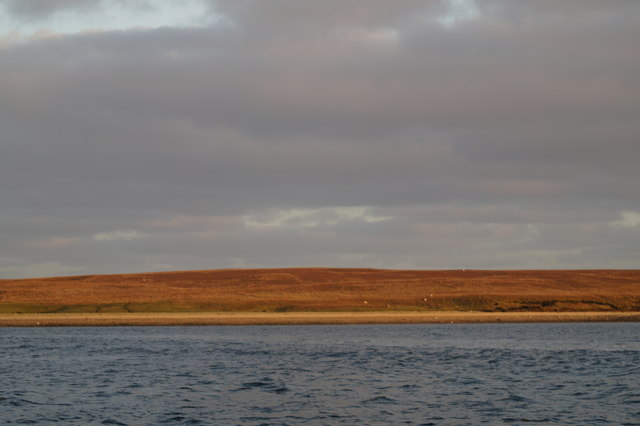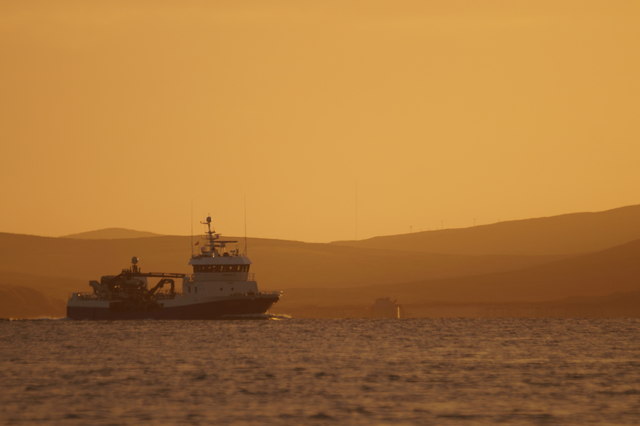Hascosay Sound
Sea, Estuary, Creek in Shetland
Scotland
Hascosay Sound

Hascosay Sound is a sea channel located in the Shetland Islands, which lie off the northeast coast of Scotland. It separates the larger islands of Whalsay and East Burra from the smaller islands of Hascosay and Linga. The sound stretches for approximately 2.5 kilometers (1.5 miles) and has a maximum width of around 1 kilometer (0.6 miles).
As a sea channel, Hascosay Sound experiences the ebb and flow of tides, with currents that can be quite strong. The surrounding landscape is characterized by rocky shores and cliffs, providing a picturesque backdrop to the sound. The water is generally deep and clear, allowing for excellent visibility and making it a popular spot for diving and snorkeling.
The sound is also home to a diverse range of marine life. Seals can often be spotted basking on the rocks, while seabirds like gannets, fulmars, and kittiwakes can be seen diving and fishing in the surrounding waters. The area is also known for its rich fishing grounds, attracting both commercial and recreational fishermen.
Hascosay Sound serves as an important transportation route for the local communities, as it allows for the movement of people and goods between the islands. Ferries and small boats regularly traverse the sound, providing a vital link for residents and visitors alike.
Overall, Hascosay Sound is a beautiful and dynamic sea channel, offering stunning views, diverse wildlife, and important transportation connections for the Shetland Islands.
If you have any feedback on the listing, please let us know in the comments section below.
Hascosay Sound Images
Images are sourced within 2km of 60.62112/-1.0131465 or Grid Reference HU5493. Thanks to Geograph Open Source API. All images are credited.
Hascosay Sound is located at Grid Ref: HU5493 (Lat: 60.62112, Lng: -1.0131465)
Unitary Authority: Shetland Islands
Police Authority: Highlands and Islands
What 3 Words
///wheat.dignitary.rollover. Near Gutcher, Shetland Islands
Nearby Locations
Related Wikis
Hascosay
Hascosay (Scots: Hascosay; Old Norse "Hafskotsey") is a small island lying between Yell and Fetlar in the Shetland Islands, Scotland. == Geography and... ==
Basta, Shetland
Basta is a hamlet on the island of Yell in the Shetland islands of Scotland. It is on the shores of Basta Voe and is in the parish of Yell. == References... ==
Burra Ness Broch
Burra Ness Broch is an iron-age broch located on the east coast of the island of Yell, Shetland, Scotland. == Location == Burra Ness Broch (grid reference...
Mid Yell
Mid Yell is a coastal settlement on the island of Yell, the second largest of Shetland Islands, Scotland. Mid Yell, the largest settlement on the island...
Have you been to Hascosay Sound?
Leave your review of Hascosay Sound below (or comments, questions and feedback).




















